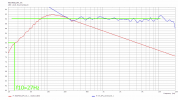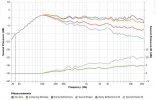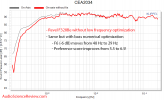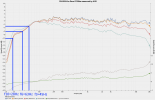If he doesn't do anything wrong with the measurements (which is difficult), then the speakers are just tuned accordingly.James' ground plane measurements almost always show a declining response setting in relatively early.
Which I think is quite plausible, since every manufacturer is currently trying to achieve the highest possible sensitivity, which is inevitably at the expense of low-frequency capability.
We can go through the competitor's case and proceed identically.Compare these with the results for the giant Perlisten S7t tower (shown below). The factory spec for the speaker is a -10 dB point of 22 Hz.
As you correctly quote, the manufacturer indicates an f10 of 22 Hz. James' measurements shows an f10 of about 27Hz.


That's a pretty good match, isn't it? I don't expect manufacturers to be completely honest, but it should still be within the realm of possibility.
Which is just about the case here.
But with almost an octave difference (as in the PBT measurements, f3 25Hz versus f3 53Hz), one should examine the difference in the free-field measurements carefully.
The "standard", if nothing else is stated, is that the specified f3 refers to a free-field measurement.With room gain, the BMR tower is flat to 25 Hz, with useful output at 20 - 22 Hz.
Your specification even explicitly states "25 Hz - 20kHz (+ 1.5 / - 3db) Anechoic".

According to James' measurements, however, it should say "(+1.5/-6dB)" or "50 Hz - 20kHz (+ 1.5 / - 3db) Anechoic", which is a world of difference in the low bass range, where you have to fight for every Hz.



